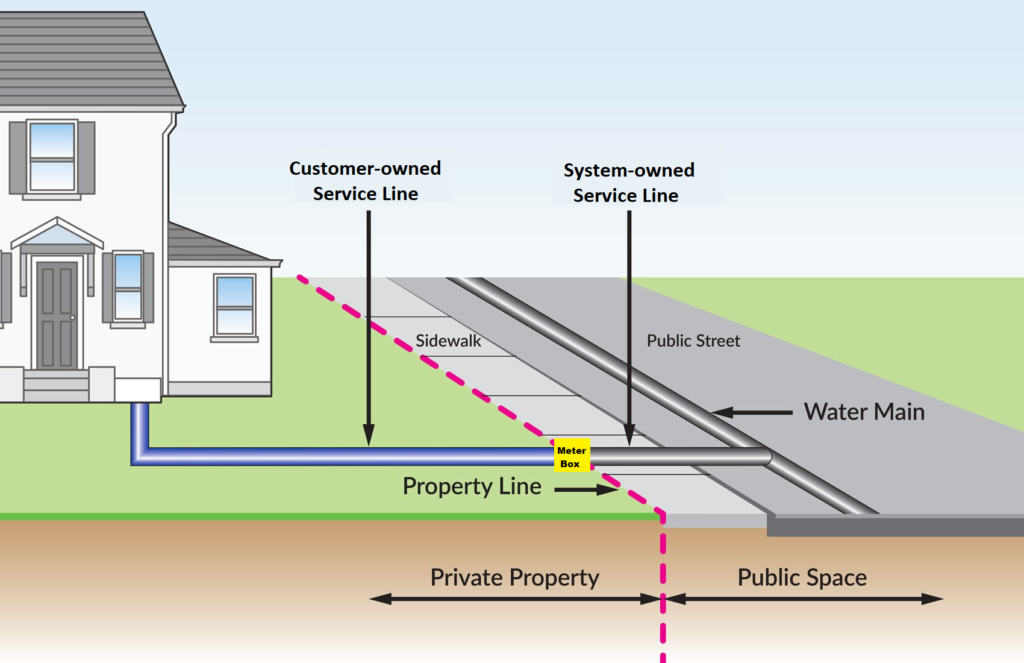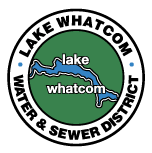Lead Service Line Inventory Information
 What is the LCRI?
What is the LCRI?
On December 16, 2021, after a public comment period, the U.S. Environmental Protection Agency (EPA) announced new revisions to the Lead and Copper Rule (LCR), the first significant changes in over 30 years. The EPA’s new rule, referred to as the Lead and Copper Rule Improvements (LCRI), aims to strengthen the LCR to better protect children and communities from the risks of lead exposure. The EPA identified priority improvements for the LCRI:
- Proactive and equitable lead service line replacement (LSLR)
- Strengthening compliance tap sampling to better identify communities most at risk of lead in drinking water and to compel reduction actions
- Reducing the complexity of the regulation through improvement of the action and trigger level construct.
What is required of Lake Whatcom Water & Sewer District?
The Lake Whatcom Water and Sewer District operates three Group A water systems (water systems with 15 or more service connections) regulated by the Washington State Department of Health:
- South Shore Water System (DOH Identification No. 95910)
- Eagleridge Water System (DOH Identification No. 08118)
- Agate Heights Water System (DOH Identification No. 52957)
The South Shore system serves the Geneva and Sudden Valley communities, while the Eagleridge and Agate Heights systems predominantly serve those neighborhoods located on the north shore of Lake Whatcom.
The District’s three Group A water systems were required to comply with the LCRI by October 16, 2024.
Which lines are included in the inventory?
The Lead Service Line Inventory (LSLI) required inventory of all service lines connected to public water systems, regardless of ownership. A service line is the pipeline between the public water main and the customer’s structure (home, apartment, business, etc.). In many cases, including the District, service line ownership is split meaning that the system (District) owns a portion and the customer owns a portion of the service line, as shown in the image to the right.
How was the inventory conducted?
Inventories specific to each system was completed using an EPA-supplied service line inventory template. District staff reviewed all available records to define the material used for both District- and customer-owned portions of as many service lines as possible. This helped us to reduce the number of service lines requiring physical inspection to define the material composition. For example, if the Whatcom County Assessor’s Office records indicate that a home was constructed after the 1986 federal ban of lead service lines, then its associated service line may be categorized as non-lead and no further investigation is required.
The District also adopted a standard operating procedure for repairs to water mains and/or service lines that District staff conduct to record the material and diameter of any service line encountered in the District’s asset management system. This will allow for confirmation of any service lines previously categorized through the historical records review process, as well as definition of material for any service lines that records were not identified for.
Finally, for those service lines whose material remained categorized as unknown, the District conducted additional categorization efforts. Using the EPA-approved statistical analysis method, 20 percent of the service lines categorized as unknown were randomly selected and physically inspected via visual inspection of the service line entering each side of a water meter box and excavation to the service line at specific locations.
Results & Submittal
Prior to the October 16, 2024 LCRI deadline, inventories of each of the District’s three water systems was completed. Inventories were submitted to the Department of Health October 1, 2024. No lead service lines were identified in the District’s three water systems.
LSL Inventory Lists
- Final Eagleridge Water System Service Line Inventory (9.17.2024)
- Final Agate Heights Water System Service Line Inventory (9.17.2024)
- Final South Shore Water System Service Line Inventory (10.01.2024)
Further Information
- LWWSD Lead Service Line Inventory Project page
- LWWSD Water Quality Reports
- EPA Revised Lead and Copper Rule
- Washington State Department of Health LCLI page
- EPA Lead in Drinking Water
